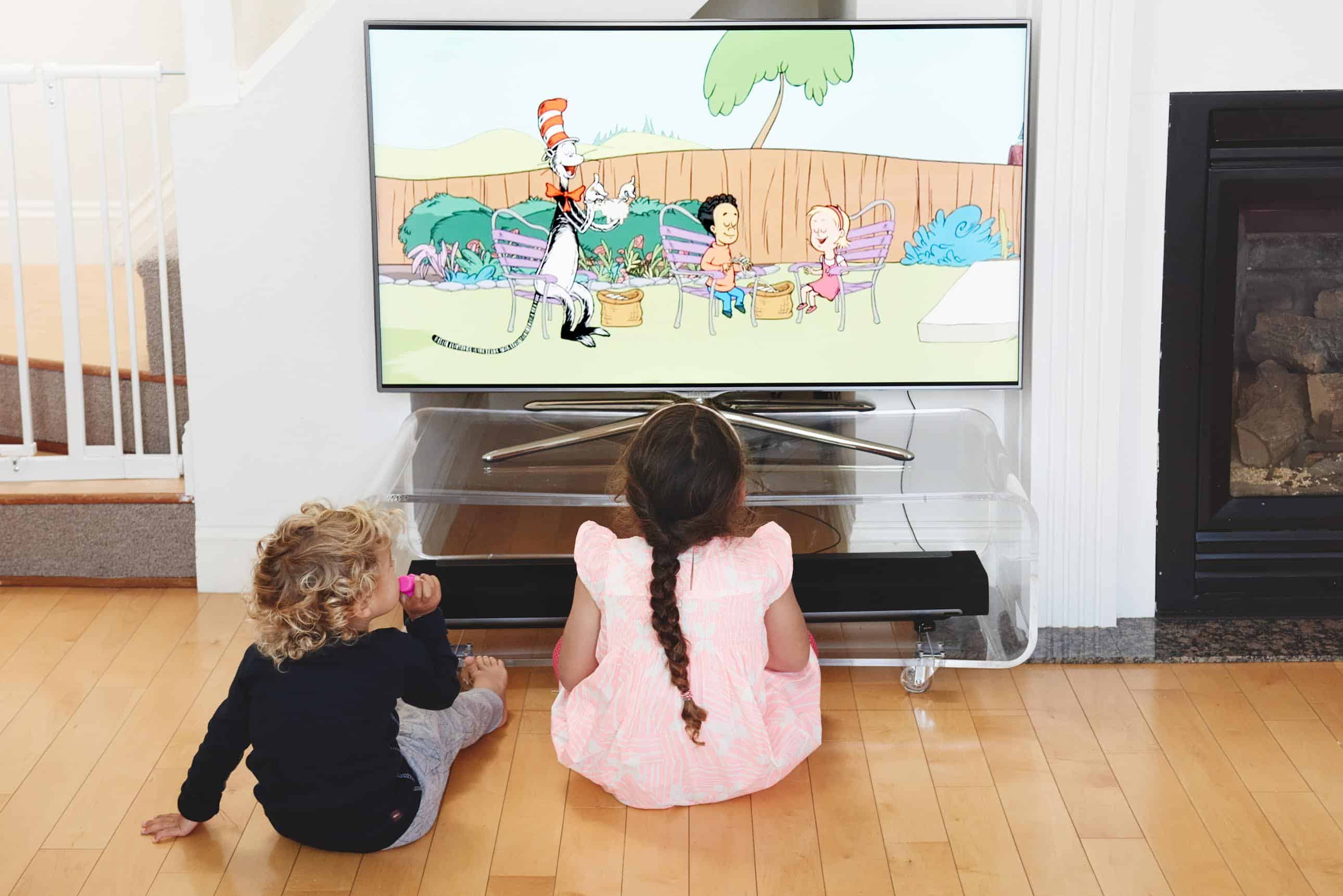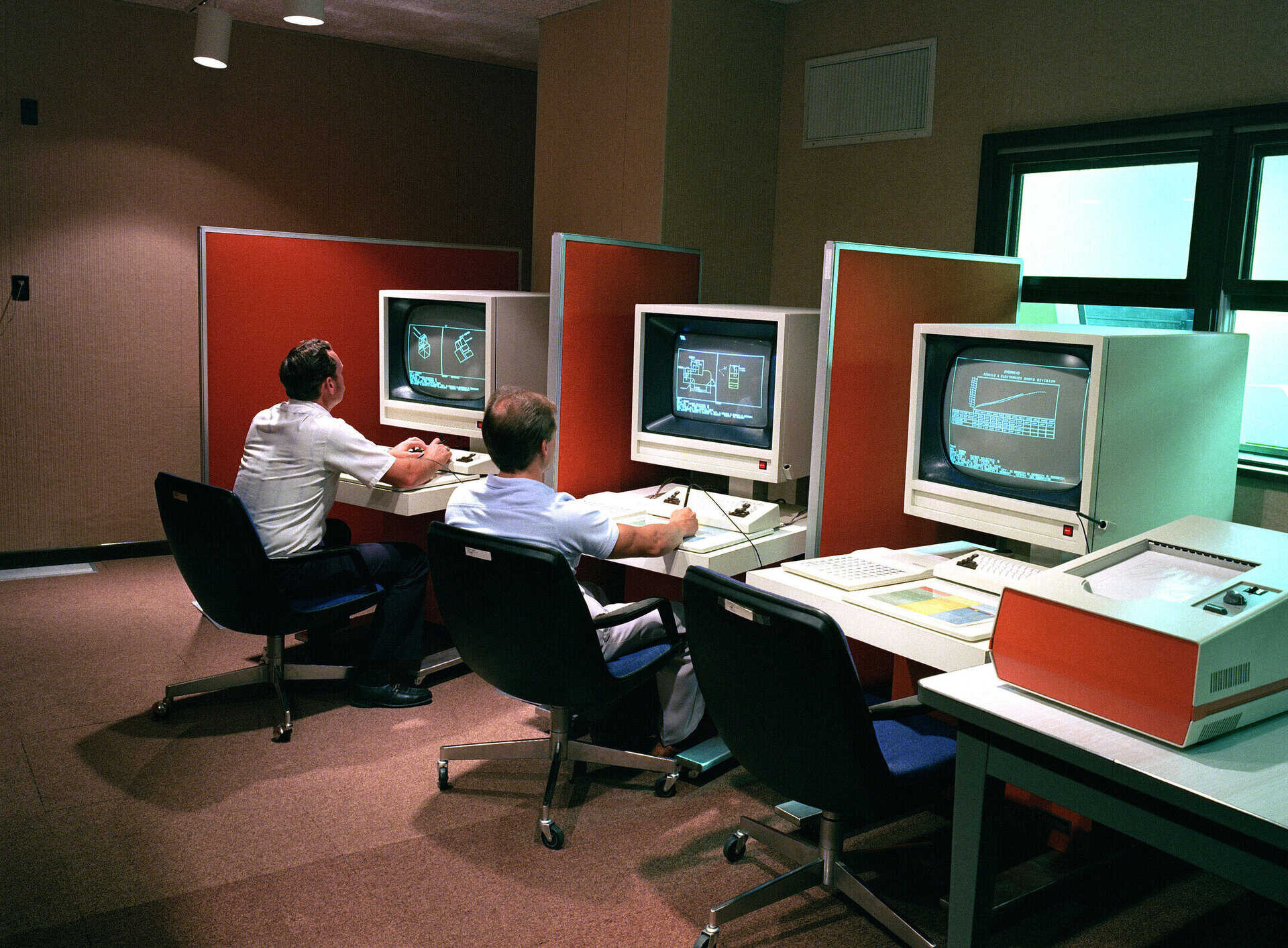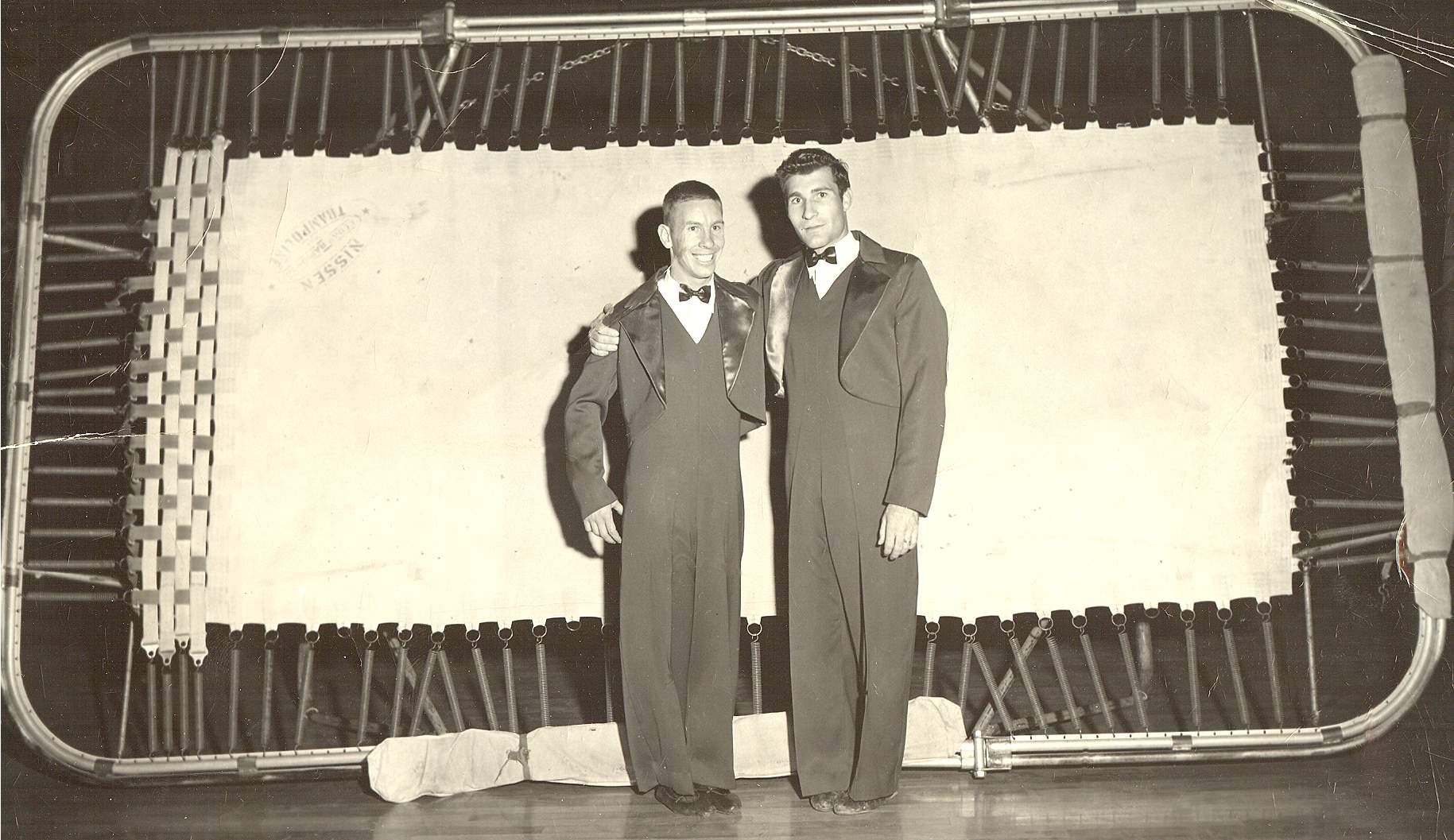Home>Technology>Home Entertainment Systems>Who Invented Television For Kids?


Home Entertainment Systems
Who Invented Television For Kids?
Modified: January 5, 2024
Discover the history of home entertainment systems and find out who invented television for kids. Explore the evolution of family-friendly entertainment!
(Many of the links in this article redirect to a specific reviewed product. Your purchase of these products through affiliate links helps to generate commission for Storables.com, at no extra cost. Learn more)
Introduction
Television has long been a staple in the lives of families around the world, captivating audiences of all ages with its diverse programming. However, the realm of children's television holds a special place in the hearts of young viewers, offering a unique blend of entertainment and education. From animated adventures to live-action shows, children's television has evolved significantly since its inception, shaping the way youngsters learn, play, and interact with the world around them.
In this article, we'll embark on an enlightening journey through the history of children's television, exploring the pioneers who revolutionized this beloved medium and delving into the profound impact it has had on generations of young viewers. From the early days of black-and-white broadcasts to the vibrant, high-definition programming of today, children's television has continuously adapted to meet the ever-changing needs of its audience. Join us as we uncover the fascinating origins, influential figures, and enduring legacy of children's television, shedding light on the remarkable individuals who brought joy and inspiration into the lives of countless youngsters.
Key Takeaways:
- Children’s television has been shaped by visionary creators like Fred Rogers, Joan Ganz Cooney, Jim Henson, and Walt Disney, who brought joy, education, and inspiration to young viewers through their iconic programs.
- Children’s television has had a profound impact on early childhood education, fostering creativity, empathy, and cultural awareness while imparting essential skills and timeless values to young minds.
Read more: Who Invented The Color Television
The Birth of Children’s Television
Children’s television emerged during a time of rapid technological advancement and shifting cultural landscapes. In the early 20th century, as television technology began to take shape, visionary creators recognized the potential to harness this medium for the benefit of young audiences. The birth of children’s television can be traced back to the post-World War II era, a time when families sought wholesome entertainment and educational content for their children.
One of the earliest and most iconic children’s programs, “Howdy Doody,” made its debut in 1947, captivating young viewers with its mix of puppetry, music, and storytelling. This groundbreaking show, featuring the freckle-faced marionette Howdy Doody and his cast of colorful characters, set the stage for the development of children’s programming on television. As the medium gained traction and households across the country welcomed television sets into their living rooms, the demand for quality children’s content continued to grow.
During this formative period, children’s television underwent a transformative evolution, with creators and producers experimenting with various formats and genres to engage and educate young viewers. Animated shorts, live-action series, and educational segments became integral components of children’s programming, laying the groundwork for the diverse landscape of content that would emerge in the decades to come.
As the 1950s unfolded, children’s television expanded its reach, offering imaginative worlds and memorable characters that resonated with audiences. The introduction of iconic shows such as “The Mickey Mouse Club” and “Captain Kangaroo” further solidified the presence of children’s programming in the television industry, captivating the hearts and minds of a burgeoning generation of viewers.
With each passing year, children’s television continued to evolve, embracing new technologies and storytelling techniques to engage young audiences. From the advent of color television to the dawn of cable and satellite broadcasting, the landscape of children’s programming underwent significant transformations, ushering in an era of boundless creativity and innovation.
As we reflect on the birth of children’s television, it becomes evident that this formative period laid the groundwork for the vibrant and diverse array of programming that continues to enrich the lives of children around the world. The pioneering spirit of the early creators and the enduring appeal of their timeless creations have left an indelible mark on the medium, shaping the way we perceive, consume, and cherish children’s television.
Pioneers in Children’s Television
The landscape of children’s television is adorned with the trailblazing efforts of visionaries who left an indelible mark on the medium, shaping its trajectory and captivating the hearts of young audiences. These pioneers, through their creativity, innovation, and unwavering dedication, transformed children’s television into a vibrant tapestry of entertainment and education.
One such luminary figure is Fred Rogers, whose iconic program “Mister Rogers’ Neighborhood” transcended the boundaries of traditional children’s television. With his gentle demeanor and profound understanding of childhood development, Rogers created a nurturing environment where children could explore complex emotions, learn valuable life lessons, and embrace the beauty of empathy and kindness. His impact on the landscape of children’s programming endures as a testament to the enduring power of genuine connection and meaningful storytelling.
Another influential figure in the realm of children’s television is Joan Ganz Cooney, the co-creator of “Sesame Street.” Cooney’s groundbreaking vision of an educational program that combined entertainment with learning revolutionized the way children engaged with television. Through the beloved characters of Sesame Street, such as Big Bird, Elmo, and Cookie Monster, Cooney and her team crafted a rich tapestry of lessons, songs, and adventures that fostered early childhood development and celebrated the diversity of the human experience.
Furthermore, the creative genius of Jim Henson, the mastermind behind “The Muppet Show” and “Fraggle Rock,” elevated the art of puppetry and storytelling to new heights, captivating audiences of all ages. Henson’s imaginative blend of whimsy, humor, and heartwarming narratives enchanted children and adults alike, leaving an indelible imprint on the world of children’s television.
Moreover, the contributions of animator and entrepreneur Walt Disney cannot be overlooked in the annals of children’s television history. Disney’s pioneering spirit and unwavering commitment to storytelling and innovation gave rise to timeless classics such as “The Mickey Mouse Club,” “DuckTales,” and “The Little Mermaid,” shaping the childhoods of generations with enduring tales of bravery, friendship, and imagination.
These visionary pioneers, alongside countless other dedicated creators and educators, have collectively shaped the landscape of children’s television, infusing it with creativity, empathy, and the boundless potential to inspire and educate. Their enduring legacy continues to resonate in the hearts and minds of young viewers, underscoring the profound impact of their contributions to the world of children’s programming.
The television for kids was invented by Joan Ganz Cooney, who created the educational children’s program Sesame Street in 1969.
The Impact of Children’s Television
The influence of children’s television extends far beyond the confines of the screen, shaping the cognitive, emotional, and social development of young viewers in profound ways. Through a diverse array of programming that ranges from educational content to imaginative storytelling, children’s television has left an indelible mark on generations, fostering creativity, empathy, and a thirst for knowledge.
One of the most significant impacts of children’s television is its role in early childhood education. Educational programs such as “Sesame Street” have revolutionized the way children learn, leveraging the power of engaging storytelling, music, and interactive segments to impart essential skills and knowledge. From literacy and numeracy to social and emotional development, these programs have served as invaluable tools for preparing young minds for the journey of learning and discovery.
Moreover, children’s television has played a pivotal role in fostering cultural awareness and celebrating diversity. Through the portrayal of characters from various backgrounds, cultures, and experiences, children’s programming has opened windows to the world, instilling in young viewers a sense of empathy, understanding, and appreciation for the rich tapestry of human existence. By showcasing diverse perspectives and narratives, children’s television has sown the seeds of inclusivity and acceptance in the hearts of its audience.
Furthermore, the imaginative realms of children’s television have sparked the creativity and imagination of countless young minds. From fantastical adventures to relatable stories of friendship and growth, these programs have served as catalysts for imaginative play, critical thinking, and the exploration of emotions and ideas. By inviting children into vibrant worlds of wonder and possibility, children’s television has nurtured the innate curiosity and creativity that define the essence of childhood.
Additionally, the moral and ethical lessons woven into the fabric of children’s programming have instilled timeless values in young viewers. Through the trials and triumphs of beloved characters, children have gleaned lessons in kindness, resilience, and the importance of standing up for what is right. These narratives have served as guiding beacons, imparting essential life lessons that resonate far beyond the confines of the television screen.
As we contemplate the impact of children’s television, it becomes evident that this beloved medium has been a steadfast companion in the formative years of countless individuals. Its ability to inspire, educate, and entertain has left an enduring legacy, shaping the hearts and minds of generations and laying the foundation for a future imbued with empathy, creativity, and the boundless pursuit of knowledge.
Conclusion
Children’s television stands as a testament to the enduring power of storytelling, imagination, and the unwavering dedication of creators and educators who have shaped this beloved medium. From its humble beginnings to the vibrant, diverse landscape of programming that exists today, children’s television has left an indelible mark on the hearts and minds of young viewers, enriching their lives with a tapestry of education, entertainment, and inspiration.
As we reflect on the evolution of children’s television, we are reminded of the transformative impact it has had on early childhood education. Through innovative programs that seamlessly blend learning with entertainment, children’s television has become a cornerstone of early learning, equipping young minds with essential skills and knowledge that serve as the bedrock for a lifetime of discovery and growth.
Moreover, the profound influence of children’s television in fostering empathy, cultural awareness, and inclusivity cannot be overstated. By embracing diverse narratives and characters, children’s programming has sown the seeds of understanding and acceptance in the hearts of young viewers, nurturing a generation that celebrates the richness of human experience and embraces the beauty of diversity.
Furthermore, the timeless values and moral lessons woven into the fabric of children’s programming have served as guiding lights, imparting essential virtues and principles that resonate deeply with audiences. Through the trials and triumphs of beloved characters, children have gleaned invaluable insights into kindness, courage, and the enduring power of compassion.
As we bid farewell to this exploration of children’s television, we carry with us a profound appreciation for the enduring legacy of this cherished medium. Its ability to ignite imagination, inspire learning, and instill timeless values has left an indelible mark on the hearts of generations, shaping the way we perceive, engage with, and cherish the world of children’s programming.
As we look toward the future, we are filled with optimism, knowing that the spirit of creativity, empathy, and boundless potential that defines children’s television will continue to enrich the lives of young viewers, serving as a beacon of hope, wonder, and endless possibilities.
Frequently Asked Questions about Who Invented Television For Kids?
Was this page helpful?
At Storables.com, we guarantee accurate and reliable information. Our content, validated by Expert Board Contributors, is crafted following stringent Editorial Policies. We're committed to providing you with well-researched, expert-backed insights for all your informational needs.
















0 thoughts on “Who Invented Television For Kids?”